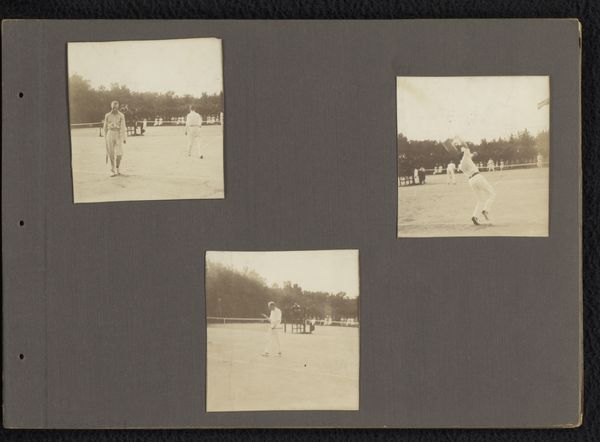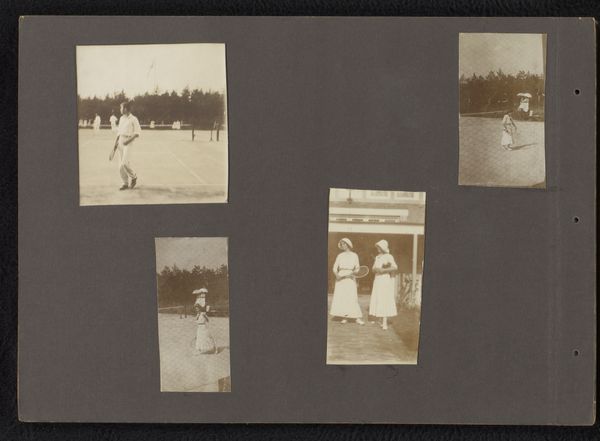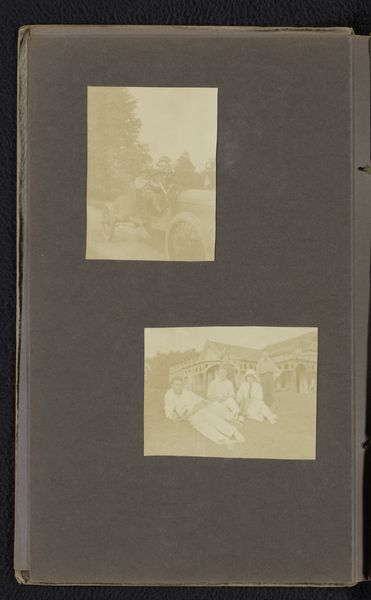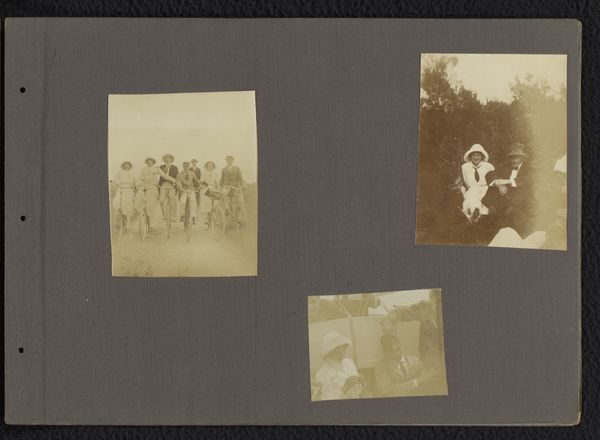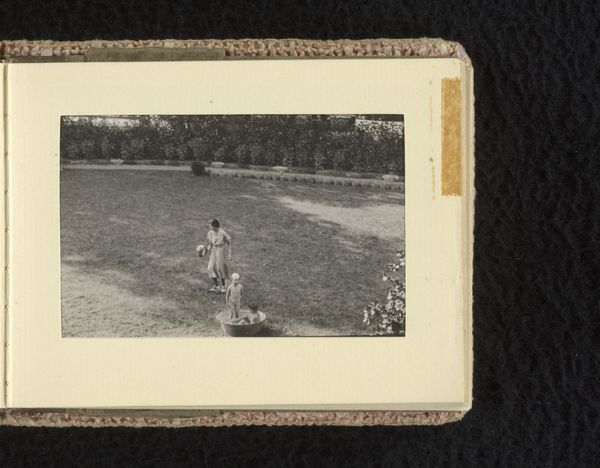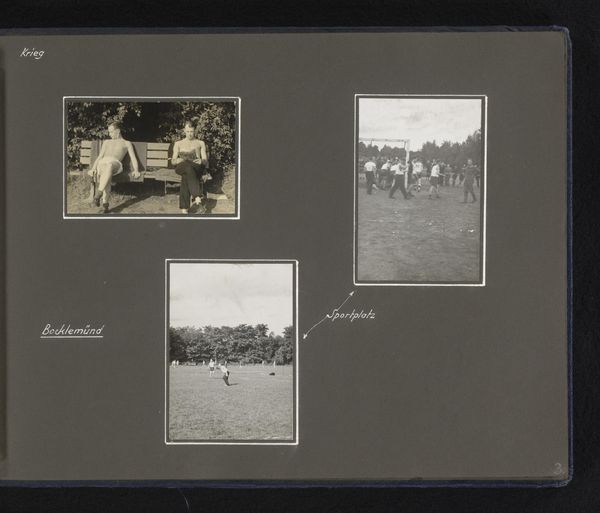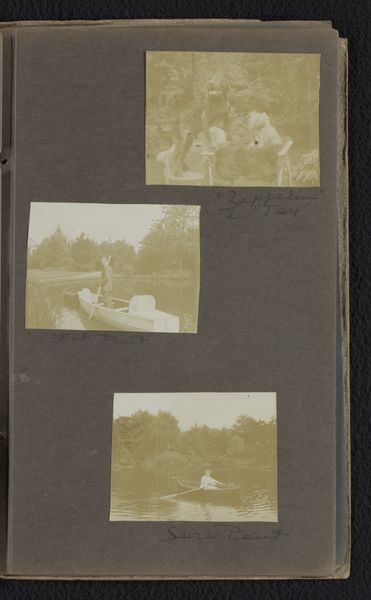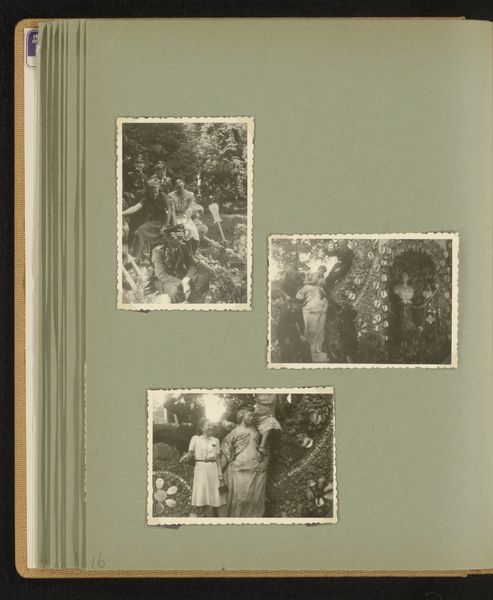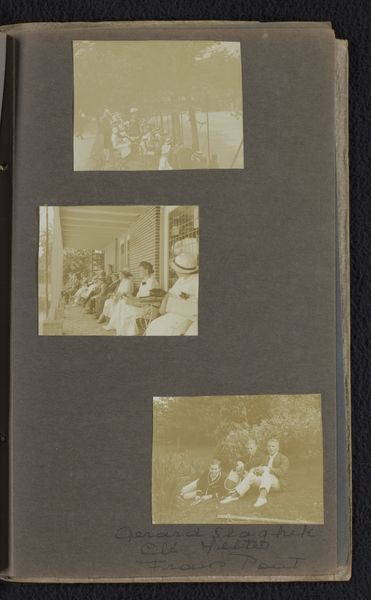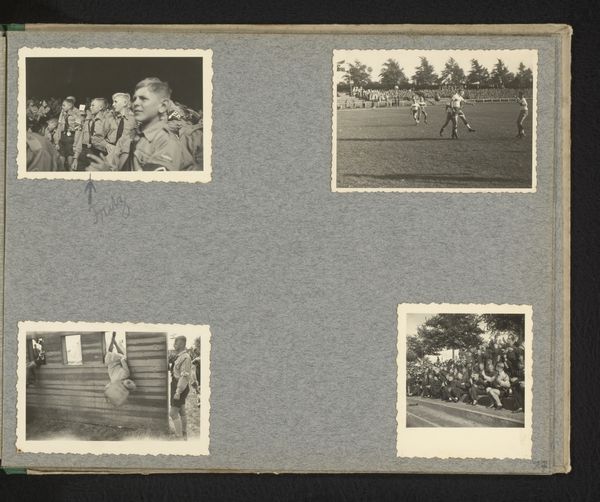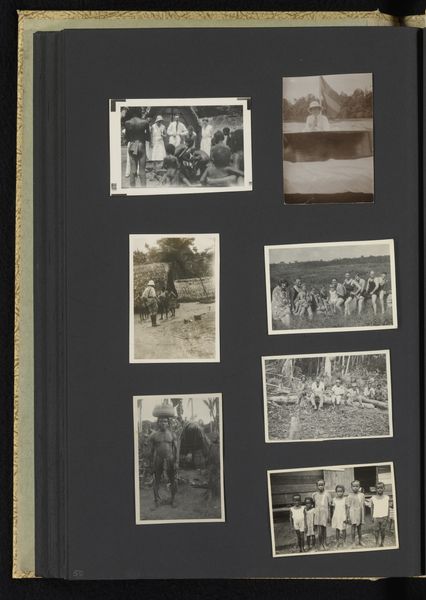
photography, gelatin-silver-print
#
landscape
#
photography
#
group-portraits
#
gelatin-silver-print
#
genre-painting
Dimensions: height 60 mm, width 85 mm, height 240 mm, width 190 mm
Copyright: Rijks Museum: Open Domain
Curator: Here we see a page from a photo album, presenting a collection of gelatin-silver prints attributed to an anonymous photographer, entitled "Sportende Duitse militairen," which translates to "German Soldiers Playing Sports." These were taken, presumably, sometime between 1944 and 1945. Editor: Well, my first reaction is one of surprise, given the context implied by the title. These feel less like documentary images of wartime and more like staged moments of playful leisure. Curator: Precisely. That dissonance is incredibly potent. The photographs seem to juxtapose the grim reality of the war with these manufactured scenes of camaraderie and levity. Consider the performative aspect: these aren't candid shots; the subjects are clearly aware of the camera. What socio-political function do such images serve? Editor: Perhaps a crude form of propaganda, meant to humanize the military force and project an image of normalcy during abnormal times. It’s unsettling how ordinary life attempts to penetrate the sphere of war through pastimes and play, particularly when you know of their presence. It’s that very proximity of sport and atrocity that chills me. Curator: It forces a confrontation with complicity. This form of self-representation serves to obscure, to mask the atrocities occurring simultaneously. The group portraits in particular, emphasize unity and strength. Think of them within the framework of social constructs—a meticulously crafted performance aimed at neutralizing dissent. Are these exercises mere recreational fun or displays of national unity? Editor: Absolutely. Consider too, the landscapes in the images. Open fields, distant trees - they invoke a sense of freedom and idyllic existence in a space that should evoke dread. Curator: The landscapes act as a carefully chosen backdrop, not to mention the staged poses the subjects are set in. This further complicates the notion of authenticity within documentary photography. What narrative were they trying to push during the height of World War II, especially given who’s photographed? It is clearly in stark contrast to lived experiences and societal power structures. Editor: It challenges our reading of historical documents. Are we to interpret them as mere snapshots or potent political statements masked as innocence? Food for thought. Curator: It surely is; photographs such as these prompt essential discussions on representation, ideology, and the subtle ways power operates within society.
Comments
No comments
Be the first to comment and join the conversation on the ultimate creative platform.
